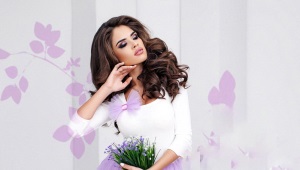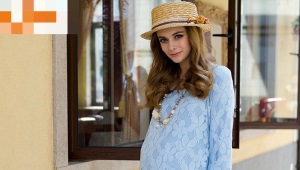Linen women's clothing
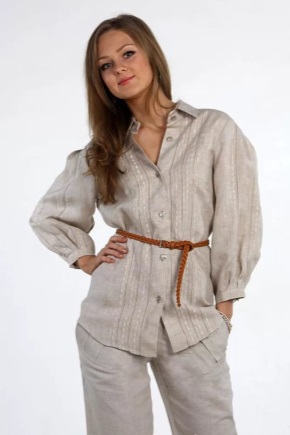
Story
The history of the creation of linen clothes began more than 9 thousand years ago. Linen fabric was loved in Ancient Persia, Sumer, Egypt, Gaul. Clothing made from such fabric was the privilege of the nobility, it was worn by the Egyptian pharaohs, priests, Roman patricians. There is even an assumption that Jason, who led his Argonauts in search of the "golden fleece", was looking for nothing more than the secret of making the finest linen, which was considered precious.
In Russia, the beginning of flax cultivation dates back to the 9th century. Our ancestors were very fond of this fabric, clothes made of linen were worn on holidays, it was considered elegant, rich and even healing. People believed that such clothes could protect against troubles and diseases.
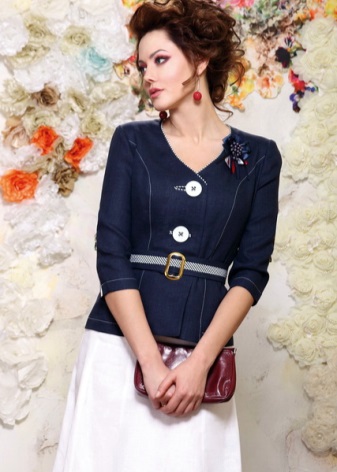
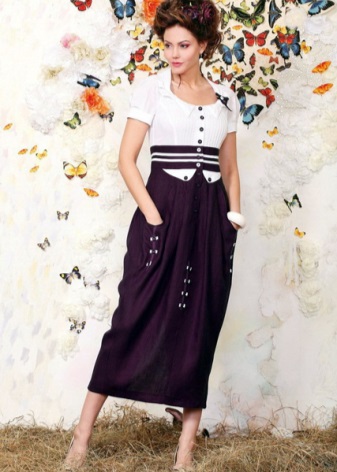
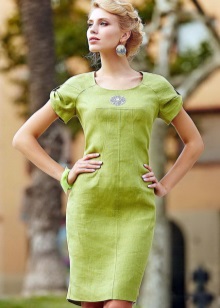
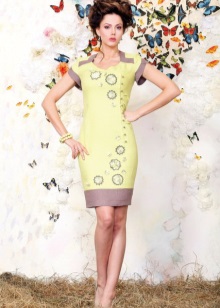

Peculiarities
Linen fabrics have a number of the following characteristics:
- high thermal conductivity and breathability, thanks to which linen clothing pleasantly cools the body even in hot weather;
- Compared to cotton, linen has a greater density and strength, the fabric made from it has little stretch. It absorbs moisture better and dries faster, and also does not deteriorate or fade from washing, respectively, it is more wearable;
- linen is an environmentally friendly product, it has bacteriological properties. It is known that under linen bandages, wounds heal faster, and linen clothing can even treat some skin diseases;
- Depending on the manufacturing method, from flax you can get both the thinnest delicate fabric (batiste), and coarse tarpaulin and even ropes.
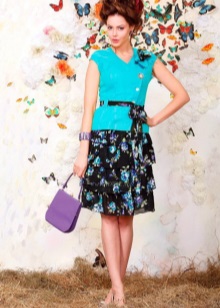
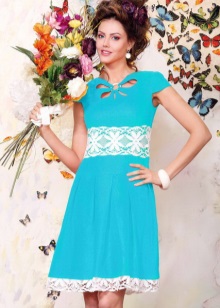

Pros and cons
Like any other fabric, linen has a number of advantages and disadvantages that must be considered when choosing an outfit from this material. Below are some of them.
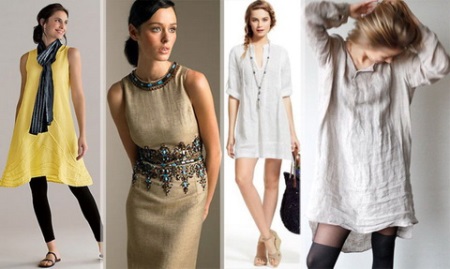
Pros:
- Due to the fact that linen is a natural fabric, it is widely used in tailoring clothes for women, men and children. Bed linen containing linen fiber, as well as curtains, tablecloths, towels, etc. are in great demand;
- linen clothes are not electrified;
- linen fabric absorbs moisture well and dries quickly, so it does not deteriorate even from daily washing;
- it has been proven that wearing linen clothes prevents the growth of bacteria and fungus on the skin; also this clothing absorbs harmful radiation (radiation, UV-rays, electromagnetic waves) and is absolutely hypoallergenic;
- linen fabric is very durable and does not stretch, which significantly increases its wear resistance.


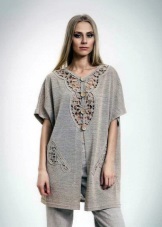

Minuses:
- if washed incorrectly, linen fabric can shrink strongly, so the water temperature should not exceed 40 degrees;
- linen clothes are very wrinkled;
- when choosing a clothing model, you must remember that this fabric is not subject to stretching, so it is better to choose loose-fitting items for more comfortable wear.
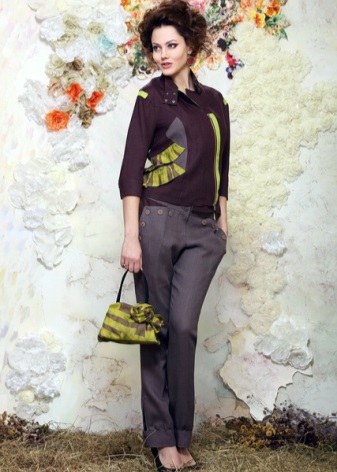
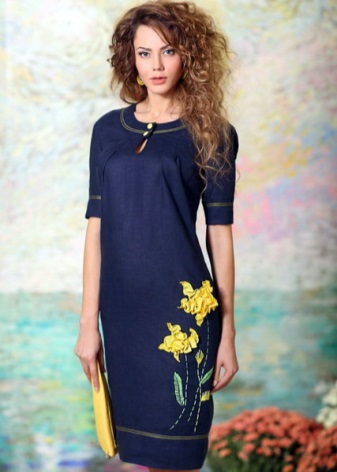
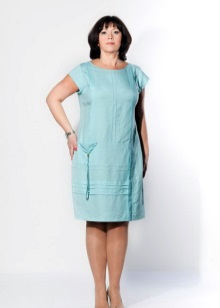
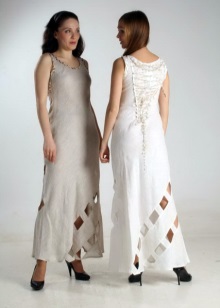
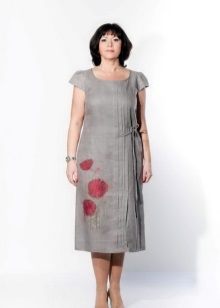
styles
The main styles of modern women's clothing made of linen:
- dress shirt. A versatile style that will suit ladies of all ages and builds. Most often, to complete the image, a belt is added to such a dress.
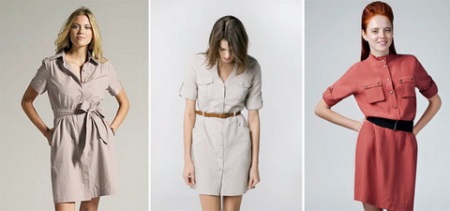
- wrap dress. In combination with flat sandals or gladiator sandals, this outfit will do, both for the office and for informal gatherings with friends;
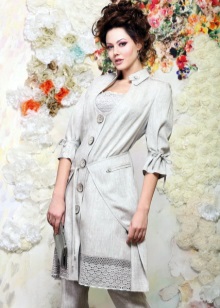
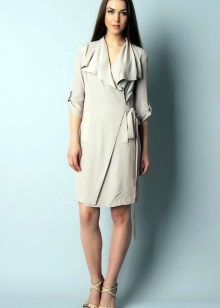
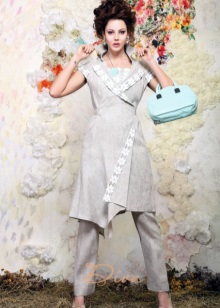
- oversized dress. Very stylish and modern solution. A dress of such a cut will suit girls of absolutely any proportions - it will hide the excess from plump ones and add volume to thin ones.
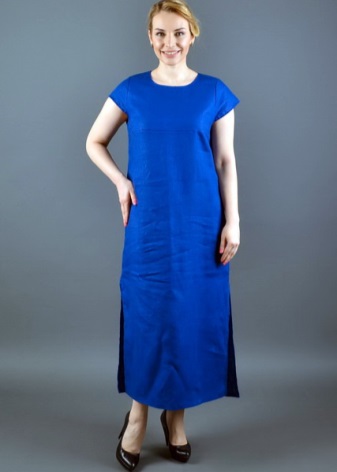
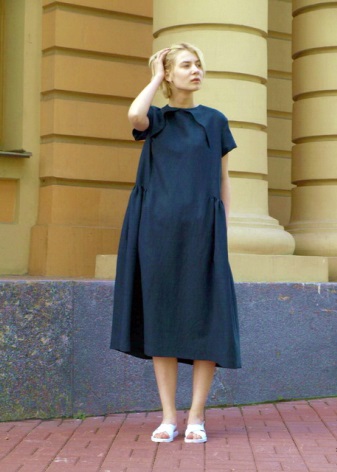
- sundress. Perhaps the most common style of linen dresses. With it, you can create both a hippie look and an ultra-modern look.

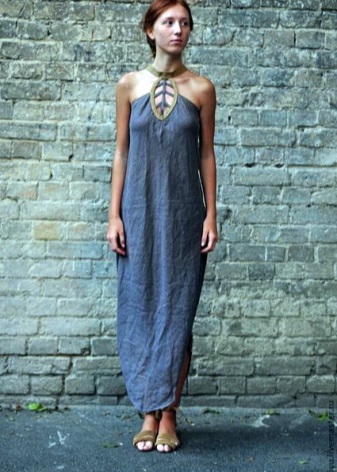
- sheath dress. This style is especially loved by business women, because it adds a touch of classics and rigor to the image. A very good combination with pumps and a matching bag.
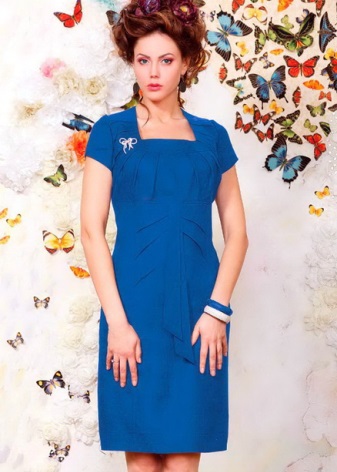
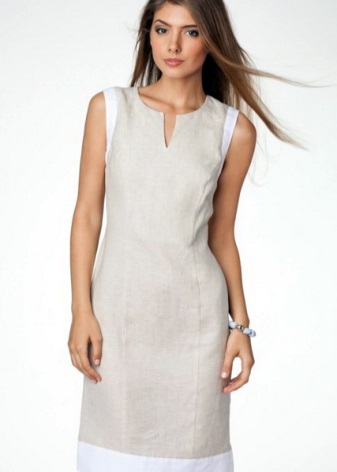
Models
Linen is a beautiful and very beloved fabric by fashion designers. Increasingly, on the catwalk you can see models of women's linen dresses of various colors and styles. Decorated with original embroidery, designer accessories, sequins, rhinestones, beads, lace, these dresses are of great interest to modern fashionistas.
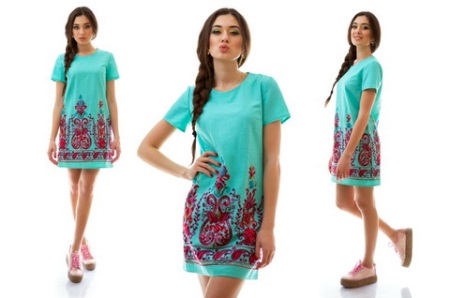
Here are the most common models of women's linen dresses:
- free-cut dresses in ethnic style. Decorations for such a model are most often decorative stitching, embroidery, appliqués. The length can vary from mini (above the knee) to maxi (to the floor);


- exclusive and avant-garde dresses in boho style. The features of this model are a mixture of colors and textures, a lot of decorative elements and a mandatory addition to the image with bright accessories (beads, large earrings or bracelets, feathers, unusual shoes and bags, etc.);
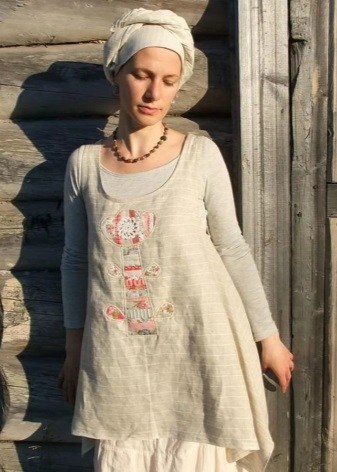
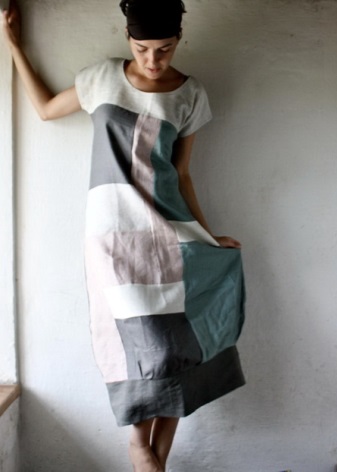
- cute and romantic cocktail dresses with lace trim. As a rule, such dresses have a simple cut, the length is up to the knee or slightly higher;

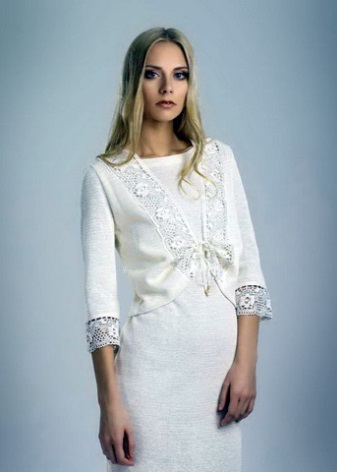
- strict classic semi-fitted model with a straight knee-length skirt. Ideal for office and business meetings;
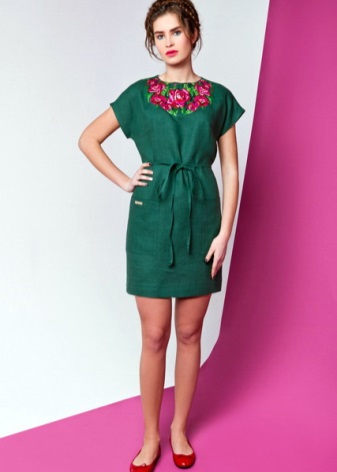
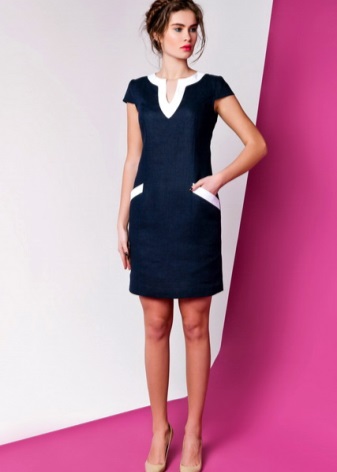
- flirty fitted model with a bell skirt or a jabot collar. For a walk, on a date, to the cinema, to a cafe - you can go anywhere in such a cute and comfortable outfit.
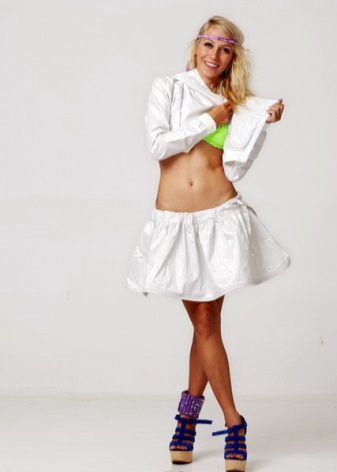
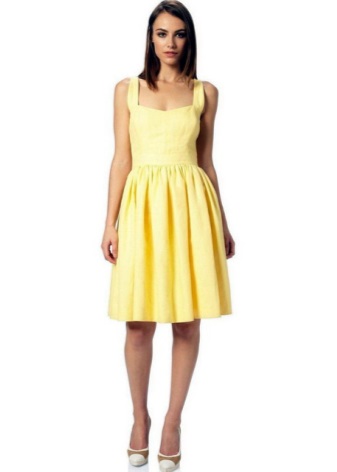
The classic color for linen clothing is beige and white. However, the designers did not confine themselves to the classics and the world catwalks were full of linen dresses of all shades of the rainbow! Both monophonic outfits and combining several colors or several shades of the same color have come into fashion.
Embroidery draws attention to a linen dress with a touch of some ethnicity, it looks very beautiful and expensive. In addition to embroidery with threads, linen items are embroidered with beads, beads of various sizes, sequins, pieces of fabric, leather. Most often, such things are handmade and made in a single copy.
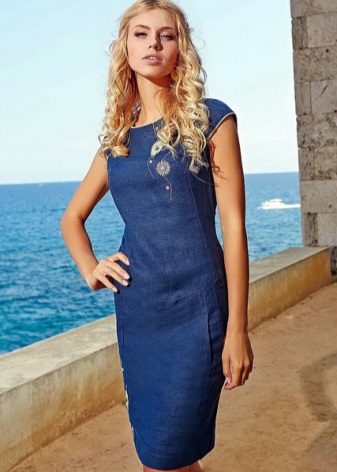
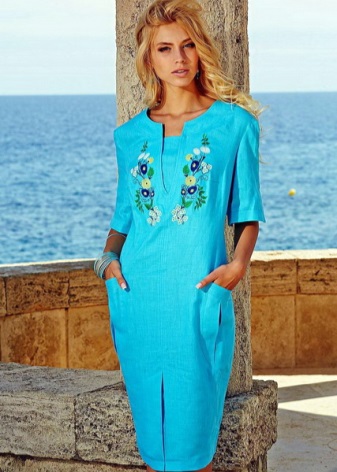
Also, linen women's outfits are often decorated with lace. Decorated in this way, things acquire elegance, a touch of luxury and bohemian chic. They do not need to be supplemented with any catchy accessories, as the lace draws all the attention to itself.
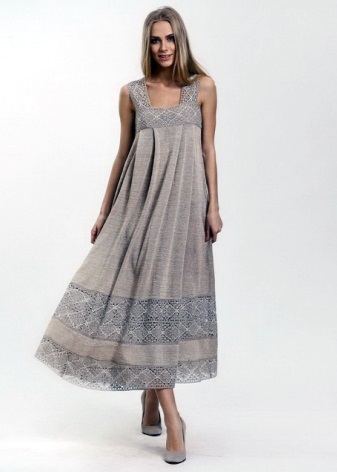
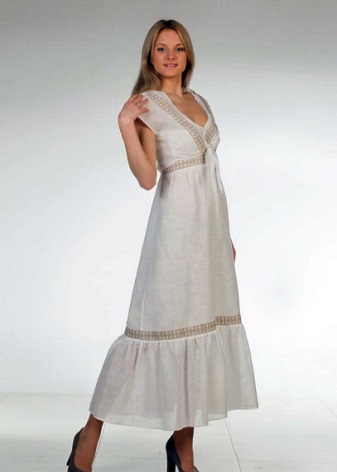
In the decoration of linen dresses, such types of lace are used as knitted (hand-knitted lace, used to create exclusive outfits), linen (weaved from linen fibers, most often dresses in ethnic style are decorated with such lace), sewing (voluminous cotton-based lace) and synthetic (used less often, because it does not go well with linen in texture).
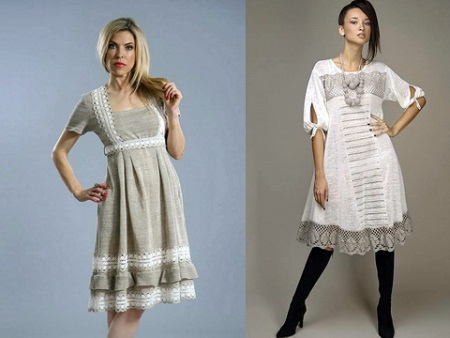
Accessories for linen outfits should preferably be selected from natural materials (leather, stone, wood).
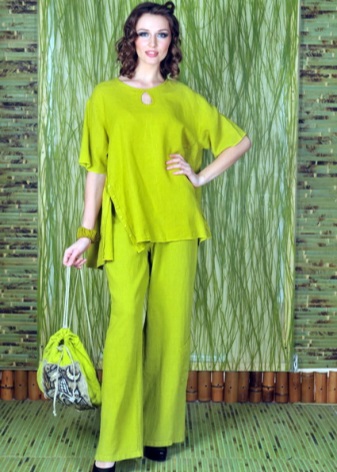

Care
Linen is an incredibly durable material and things made from it, with proper care, can last up to 20 years! And what is the right care? Let's try to figure it out.
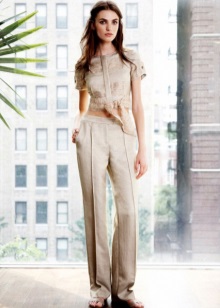
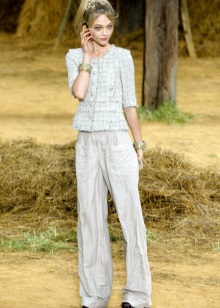
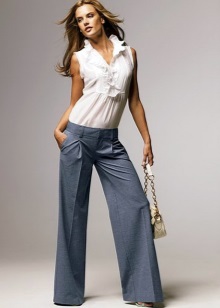
Washing, drying and ironing:
- for linen clothing, hand washing is preferable, but it can also be washed in a washing machine by selecting a delicate mode;
- use a powder for children's things, as it helps soften the fabric and does not contain aggressive cleaning ingredients;
- the water temperature during washing should not exceed 30-40 degrees in order to avoid shrinkage of things and loss of color;
- linen clothes cannot be twisted - you should gently wring it out with your hands, straighten it and hang it to dry in the open air (avoiding sunlight);
- it is strictly forbidden to soak linen items - linen absorbs water well, the fibers swell and the fabric loses its shape;
- do not overdry linen items, it is advisable not to dry them even a little and iron them slightly damp;
- the recommended iron temperature for ironing is 180-200 degrees;
- if the product has knitted lace, embroidery or appliqué, ironing must be done from the wrong side of the product.
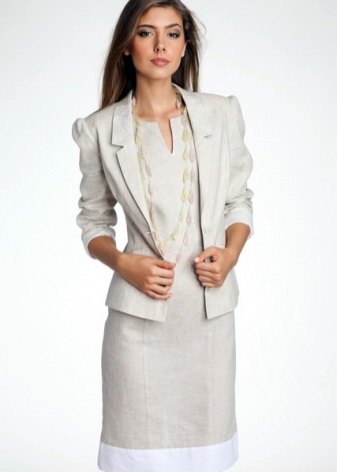
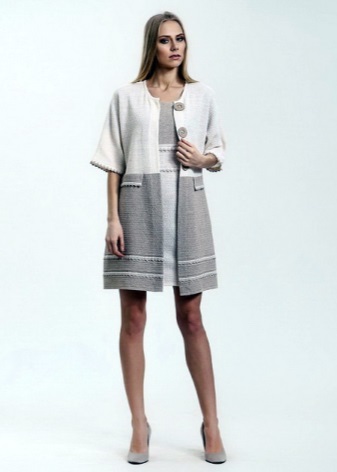

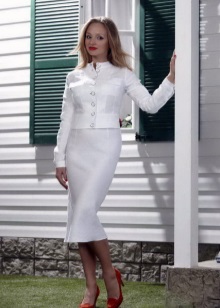
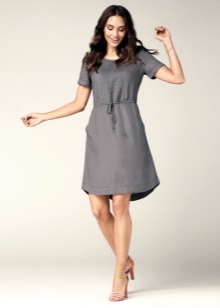
Storage:
- linen should be stored folded, protected from sunlight;
- if you want to put away a thing for a long time, wrap it in wrapping paper;
- linen trousers should be hung on special coat hangers with clothespins that will help them keep their shape and straighten out under the influence of their own weight.























